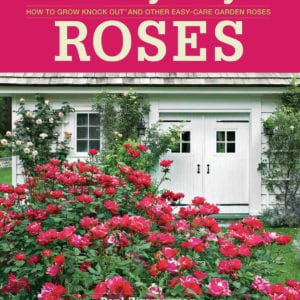Paul F. Zimmerman
1998
Volumes of material have been written about rose care and it’s the tone of this mass of material that turns people off to growing roses in the first place. You know, spend $20 on a rose and then go drop $200 on chemicals to take care of them. Who needs it!
But there is a simpler more natural way to take care of roses. First and foremost pick roses that are disease resistant and vigorous for your area. This means you will be leaning more towards shrub roses, old fashioned roses and away from many of the modern Hybrid Teas. The best thing to do is ask your favourite local Independent Garden Center or contact a rose speciality nursery that does mail order. Also your Local Chapter of the American Rose Society is a great resource.
Once you have the roses here is a simple season long program that will keep them looking their best. Let’s take it from the top.
When your roses are dormant around January or February, do some cleaning and light pruning. For those of who live in warm climates whose roses do no go dormant do this in early January. First cut out the dead wood. It’s a great place to start because you cannot make a mistake. It’s already dead. Then take out the twiggy growth in the middle of the rose and lastly give the rose a nice shaping. Never take more than 1/3 of the mature size. That’s it, pruning is done.
When the roses start to push new growth it’s time to feed. I like to wait until the new growth is about 2 inches long and new leaves are starting to be visible. First you’ll want to find some kind of organic compost. Roses love it. Aged horse manure is great stuff, but so is your own, or mushroom compost. Just try to get something were the micro-nutrients have not been sterilized out.The only other thing you’ll need is a good organic plant fertilizer that releases its nutrients over time. Check with your local Independent Garden Center.
Start by putting the fertilizer as per directions around each bush. On top of that put a couple of inches of compost and on top of it a decorative mulch of your choice. That’s it, spring feeding is finished. The time release fertilizer will work from 4-6 months, slowly adding fertilizer so your roses don’t get overwhelmed.
If you see diseases during the season then treat it with something like Safers Fungicide. It’s a natural product that will get rid of disease once it occurs. If you see aphids and the like then spray with Insecticidal Soap. These kinds of roses are tough and can live with a little damage.
After you’ve enjoyed a lovely spring to early summer bloom we can do a little work when the hot days of July and August come around. I like to give the roses a quick cleaning – again taking out dead wood and deadheading the roses that repeat flower. Don’t deadhead the spring flowering roses because these will be your rose hips during the winter. And the birds love them.
If you live on the East Coast then this time of year is Japanese Beetle Time! I am not going to recommend severe sprays like Sevin because it kills everything. My feeling is the roses don’t bloom much in the heat anyway so just keep things under control. Neem Oil works well at keeping them suppressed as do birds like Purple Martins so put up some Martin Houses. Great results are being had with applications of Milky Spore bacteria way back in the spring before the beetles come out of the ground. As with any kind of natural treatment you get success by combining several things.
Around Labour Day it’s time to give the roses a little fertilizer kicker. I use a general organic fertilizer. Do not use time release because you do not want to be giving the roses nitrogen in the fall when they are trying to go dormant. If you like foliar feeding then go ahead and do it a couple of times as well. This will set you up nicely for the fall bloom.
That is all there is to it. This simple program will provide the basic care any good vigorous rose will need for an entire season. If you want to do more, by all means go ahead. But the point of gardening is to enjoy our plants and by taking a simple approach to care who knows, you might even have time to stop and smell the roses.


